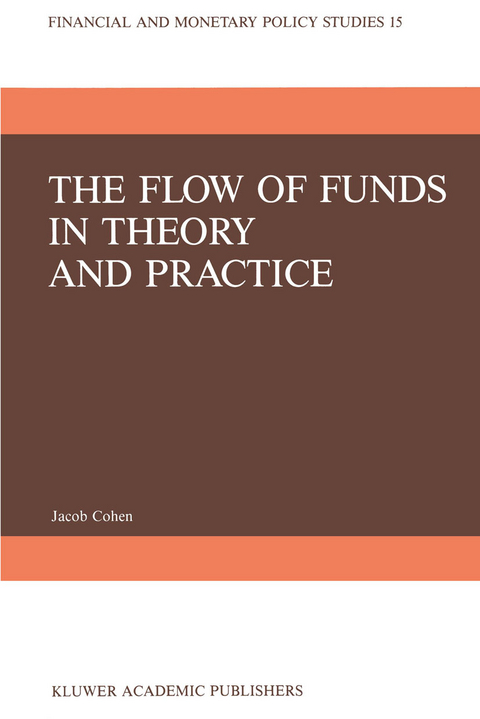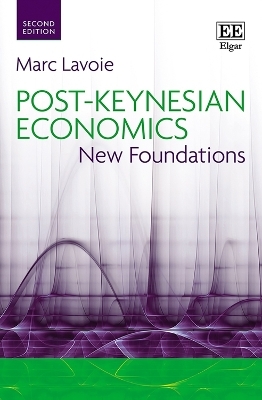
The Flow of Funds in Theory and Practice
A Flow-Constrained Approach to Monetary Theory and Policy
Seiten
1987
Kluwer Academic Publishers (Verlag)
978-90-247-3601-0 (ISBN)
Kluwer Academic Publishers (Verlag)
978-90-247-3601-0 (ISBN)
- Titel z.Zt. nicht lieferbar
- Versandkostenfrei innerhalb Deutschlands
- Auch auf Rechnung
- Verfügbarkeit in der Filiale vor Ort prüfen
- Artikel merken
Each decision by economic agents is seen as two-ended in terms of markets: one market supplies the source of funds and the second market absorbs these funds. Credit markets, and the bank credit market in particular, become the source of disturbance in the theoretical model, but the necessary involve ment of the money market is also stressed.
The central emphasis in the book is on the transaction and the constraints that its architecture imposes on a discussion of monetary theory and policy. Because of their comprehensiveness and discipline the flow-of-funds accounts are the ideal vehicle for theorizing about real and financial interaction. Such int- action can best be understood when real and financial transac tions are expressed in a common flow dimension. Each decision by economic agents is seen as two-ended in terms of markets: one market supplies the source of funds and the second market absorbs these funds. A matrix of interdependent markets is featured throughout the theoretical discussion. Credit markets, and the bank credit market in particular, become the source of disturbance in the theoretical model, but the necessary involve ment of the money market is also stressed. Theories of finan cial instability and crisis now receiving considerable attention are part of the more general theory of the flow of funds. The rationale for the monetary authority to target credit rather than the monetary aggregates emerges from the analytical discus sion. A flow-constrained analysis clarifies interest-rate deter mination, provides a helpful format for discussing equilibrium and disequilibrium, integrates credit markets with the familiar IS-LM framework, and identifies a class of missing equations in macro-monetary theory. The prototype of the missing equations is an equation explaining monetary dissaving in terms of a series of arguments only one of which will be the stock of real balances or real wealth.
The central emphasis in the book is on the transaction and the constraints that its architecture imposes on a discussion of monetary theory and policy. Because of their comprehensiveness and discipline the flow-of-funds accounts are the ideal vehicle for theorizing about real and financial interaction. Such int- action can best be understood when real and financial transac tions are expressed in a common flow dimension. Each decision by economic agents is seen as two-ended in terms of markets: one market supplies the source of funds and the second market absorbs these funds. A matrix of interdependent markets is featured throughout the theoretical discussion. Credit markets, and the bank credit market in particular, become the source of disturbance in the theoretical model, but the necessary involve ment of the money market is also stressed. Theories of finan cial instability and crisis now receiving considerable attention are part of the more general theory of the flow of funds. The rationale for the monetary authority to target credit rather than the monetary aggregates emerges from the analytical discus sion. A flow-constrained analysis clarifies interest-rate deter mination, provides a helpful format for discussing equilibrium and disequilibrium, integrates credit markets with the familiar IS-LM framework, and identifies a class of missing equations in macro-monetary theory. The prototype of the missing equations is an equation explaining monetary dissaving in terms of a series of arguments only one of which will be the stock of real balances or real wealth.
I The Transaction: The Basic Building Block.- II Equilibrium.- III Disequilibrium.- IV Money and Banking in the Flow of Funds.- V The Degree of Netness: Stocks vs. Flows.- VI Policy Implications.- VII An Idealized Set of Accounts.- VIII Simple Model Building: The Sector and Transaction Identities.- IX Flow-Flow Models.- X A Stock Market Model.- XI Portfolio Balance Models.- XII Disequilibrium Models.- XIII “Direct Linkage” Policy Models.- XIV The Strength and Limitations of Flow-of-Funds Analysis.- References.- Name Index.
| Reihe/Serie | Financial and Monetary Policy Studies ; 15 |
|---|---|
| Zusatzinfo | VIII, 343 p. |
| Verlagsort | Dordrecht |
| Sprache | englisch |
| Maße | 160 x 240 mm |
| Themenwelt | Wirtschaft ► Volkswirtschaftslehre ► Finanzwissenschaft |
| Wirtschaft ► Volkswirtschaftslehre ► Makroökonomie | |
| ISBN-10 | 90-247-3601-3 / 9024736013 |
| ISBN-13 | 978-90-247-3601-0 / 9789024736010 |
| Zustand | Neuware |
| Haben Sie eine Frage zum Produkt? |
Mehr entdecken
aus dem Bereich
aus dem Bereich
Wie Bitcoin, Ether und digitaler Euro unsere Wirtschaft …
Buch | Softcover (2022)
Schäffer-Poeschel (Verlag)
29,95 €
New Foundations
Buch | Softcover (2022)
Edward Elgar Publishing Ltd (Verlag)
64,75 €
and why it doesn't work the way we think it does
Buch | Softcover (2023)
Pan Books (Verlag)
13,70 €


